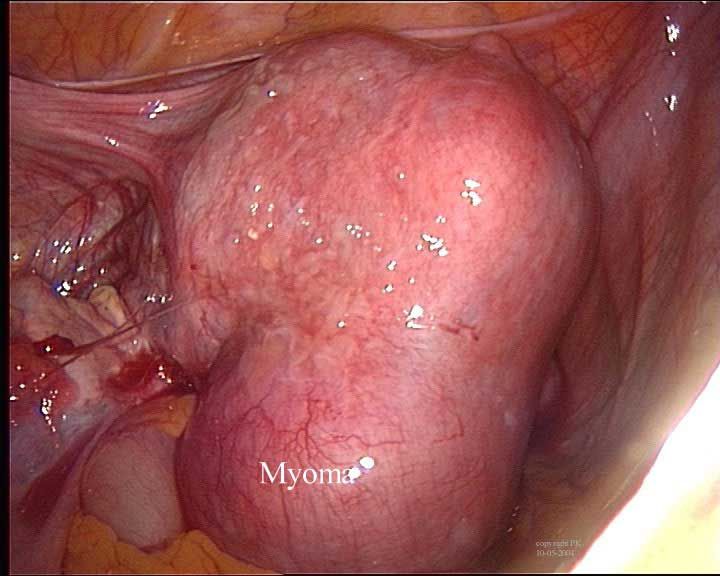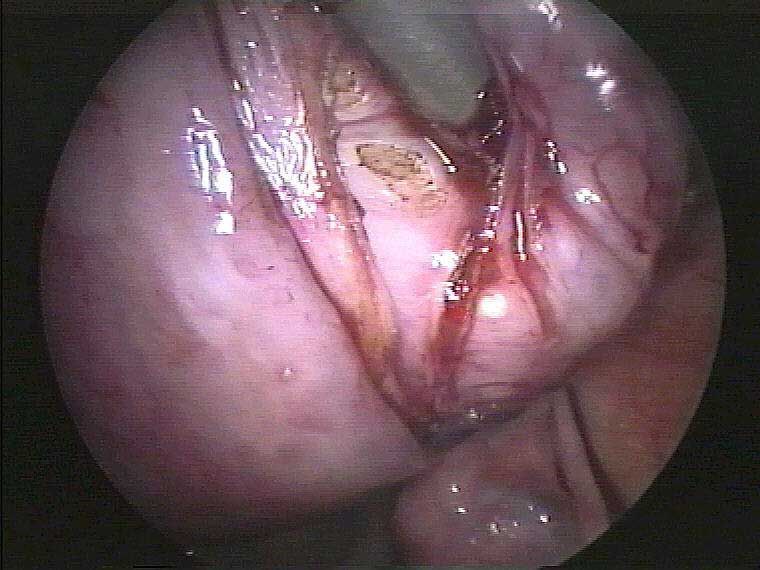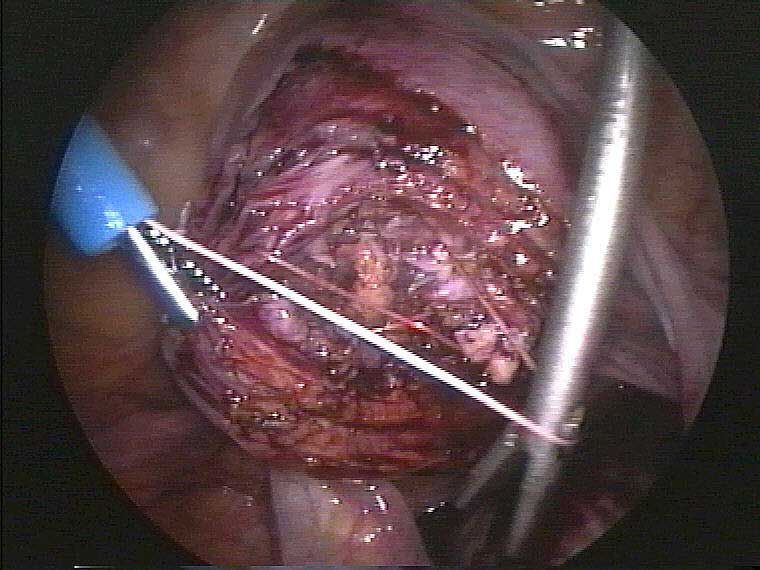Hysterectomy: Techniques
Total laparoscopic hysterectomy (TLH) has for me since 1996 completely replaced all abdominal hysterectomies, except when the uterus is bigger than 1 kilo. A series of larger uteri have been operated (my biggest was 1850 grams) but when a uterus is larger than 1 kilo it is preferable to discuss the surgery in detail with the patient beforehand.
Laparoscopic hysterectomyVaginal hysterectomyRemoval of ovariesMyomectomyFrequently asked questions
Laparoscopic hysterectomy
Total laparoscopic hysterectomy (TLH) has for me since 1996 completely replaced all abdominal hysterectomies, except when the uterus is bigger than 1 kilo. A series of larger uteri have been operated (my biggest was 1850 grams) but when a uterus is larger than 1 kilo it is preferable to discuss the surgery in detail with the patient beforehand. In 1996 a group of pioneers founded the One Kilo Club to mark clearly that this kind of surgery was feasible. Today I would stress that laparoscopic hysterectomy for a uterus of more then 1 kilo should not be considered as a routine. If the surgeon has sufficient experience and the patient explicitly wants to avoid a laparotomy, it can be performed provided a thorough informed consent.

click image to enlarge
A laparoscopic hysterectomy has the advantages in comparison with the same intervention performed by laparotomy of less pain, of a shorter hospital stay and a more rapid recovery. This is similar for all laparoscopic interventions when compared to the same intervention performed by laparotomy.
Conversion rate. Until today my conversion rate is 0%. Not one laparoscopic hysterectomy had to be converted to an abdominal hysterectomy in a series of several hundred.
Technique
THL is performed using electrosurgery and 3 secondary trocars. As a manipulator the Uterine Rotator (Koninckx manipulator) or the Clermond Manipulator is used. After excision, the uterus is removed vaginally, and the vaginal cuff is sutured laparoscopically. Duration of surgery generally is less than 60 min for a uterus less than 500 grams. If requested, and the uterus is not too big, secondary punctures can be put lower within bikini limits. This, however, can make surgery more difficult.
Hospitalisation is standard 3 days
Complications. Complications of laparoscopic hysterectomy are comparable to complications of abdominal hysterectomy, ie around 1% ureter problems and some 1% postoperative bleeding and 2-3% infections. In a series of several hundred, I had 3 ureter complications (1 late stenosis and 2 coagulation lesions) and 2 postoperative bleedings. Ureter complications could almost always be treated by repeat laparoscopy (except 1 in who a ureter reimplantation had to be performed). Also postoperative bleeding could always be solved by repeat laparoscopy.












Vaginal hysterectomy
To compare laparoscopic and vaginal hysterectomy is a waist of time, since both are complementary. It is stupid to replace an easy laparoscopic hysterectomy with a difficult vaginal hysterectomy. It is equally stupid not to perform a vaginal hysterectomy for a severe prolaps.
Removal of ovaries
Whether ovaries should be removed or not remains debated. The argument pro removal is a risk of ovarian cancer of 1/200; The argument contra is the production of androgens also after menopause.
For this reason, I will not routinely remove the ovaries unless the patient is over 60 years old, unless the patient carries a specific risk or unless the patients request this.
Myomectomy




Frequently asked questions
- Abdominal hysterectomy: For me and other endoscopists, the abdominal hysterectomy is history, and is only occasionally performed for very large uteri.
- LAVH: laparoscopic assisted vaginal hysterectomy. This is the technique performed until the mid 90’s when endoscopic surgery was less well developed, when the uterine manipulators were not yet available. This technique has the same results and indications as the TLH, the only difference is that the lower part of excision, the extraction and the suturing is performed as a vaginal hysterectomy. The only small drawback for a LAVH is that the patient has to be repositioned during surgery, and that contamination from the vagina probably is slightly higher than during a TLH.
- Subtotal hysterectomy: The indication for a subtotal hysterectomy is still debated : it has been claimed to have a better pelvic support, and possibly an improved sexuality, but these have not yet been demonstrated. Since a larger secondary port has to be used for morcellation and until final demonstration of advantages, I normally perform a TLH, except when specifically requested by the patient
Website: http://www.gynsurgery.org
